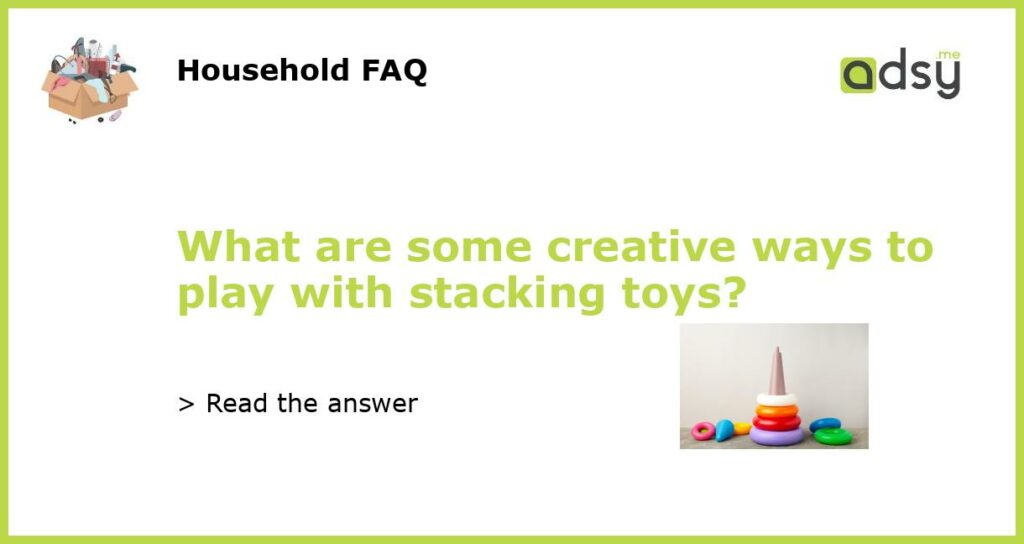Introducing Fun and Unique Stacking Patterns
Stacking toys are a versatile and educational tool that help children develop their fine motor skills, hand-eye coordination, and creative thinking. While the traditional way of stacking toys in a simple vertical tower is beneficial, there are many other creative ways to play with these toys that can further enhance a child’s learning experience.
One creative way to play with stacking toys is by introducing fun and unique stacking patterns. Instead of simply stacking the toys in a straight line, children can experiment with different shapes and angles. They can create zigzag patterns, spirals, or even stack the toys in the form of letters or numbers. This not only adds a fun element to playtime but also encourages children to think critically and problem-solve as they figure out how to balance the toys to create the desired shapes.
Building Bridges and Tunnels
Another exciting way to play with stacking toys is by using them to build bridges and tunnels. Children can arrange the toys in a way that creates a sturdy structure for their other toys to pass through. This opens up a whole new world of imaginative play as they create roads, railways, or even obstacle courses for their toy cars and figurines.
Using stacking toys to build bridges and tunnels allows children to explore the concept of cause and effect as they figure out how to balance the toys effectively. It also helps develop their spatial awareness and problem-solving skills as they find the best way to create stable structures that can support the weight of other toys.
Incorporating Color and Size Sorting
Stacking toys are not only great for stacking, but they can also be used for color and size sorting activities. Parents or educators can introduce these concepts by providing different colored stacking toys and asking children to sort them by color or size.
For color sorting, children can stack toys of the same color together, creating color-themed towers. This activity not only helps them practice their color recognition skills but also encourages them to think creatively as they experiment with different color combinations.
Similarly, for size sorting, children can stack toys from smallest to largest or vice versa. This activity enhances their understanding of size relationships and helps develop their spatial skills as they compare and contrast different sizes.
Creating Stacking Challenges
To make stacking toys even more engaging, parents or educators can introduce stacking challenges. These challenges can vary in difficulty based on the child’s age and skill level.
For younger children, challenges can involve stacking the toys in a certain sequence or pattern. They can be asked to stack the toys in alternating colors or duplicate a given stacking pattern from a picture.
For older children, challenges can involve more complex stacking tasks. They can be asked to create a specific structure using the stacking toys, such as a castle or a bridge. This encourages them to think strategically and problem-solve as they figure out the best way to stack the toys to achieve the desired outcome.
Incorporating Storytelling and Pretend Play
Lastly, stacking toys can be integrated into storytelling and pretend play activities. Children can use the toys to act out stories or create scenes from their favorite books or movies.
For example, they can stack the toys to create a tower for their princess figurine or build a farm for their animal toys. This not only enhances their creativity and imaginative thinking but also helps develop their language and communication skills as they narrate their stories.
By incorporating stacking toys into storytelling and pretend play, children can explore different narratives and themes while simultaneously working on their fine motor skills and spatial awareness.






